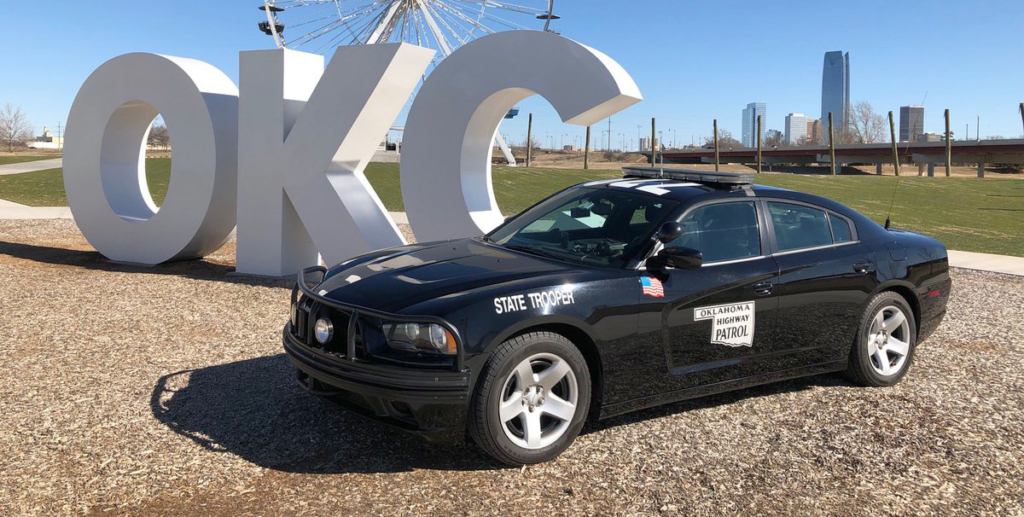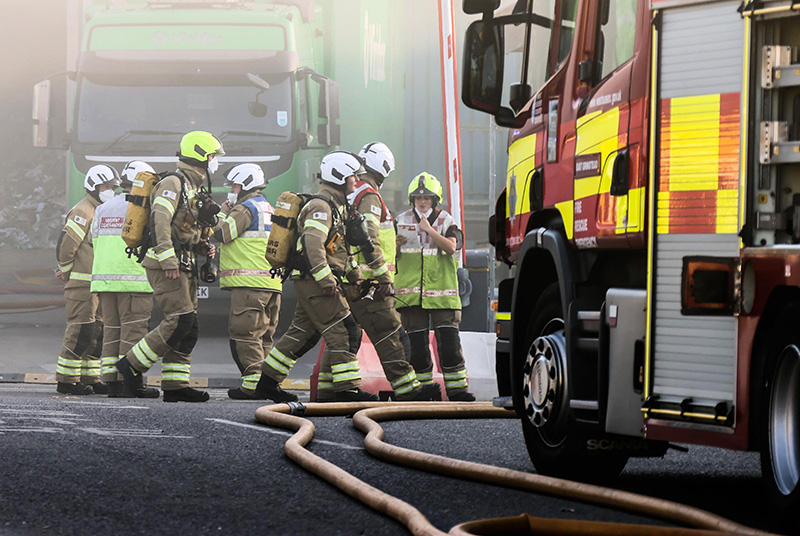It’s crucial that first responders have the right equipment at their disposal when arriving at a scene. Having the right comms tools improves emergency response times, which can be the difference between life and death. Today we look at different public safety agencies, and compare their unique communications needs.
Law Enforcement, Emergency Medical Technicians, and Fire Services are all alike in their roles as first responders to emergencies. However, the equipment they use to get the job done varies greatly.
Law Enforcement

Law Enforcement are primarily concerned with maintaining public order, managing public safety and the apprehension and detention of individuals. Their equipment load is designed to be mobile and lightweight to cover their range of responsibilities, from being at the station one moment, to pursuing a suspect the next. Police officers are typically equipped with a portable radio on their belt, remote speaker mic (RSM) on their shoulder, in addition to a cell phone. This equipment load best suits an officer as they move between multiple network coverage areas, keeping them safe as they do so.
Police vehicles are also equipped with mobile radios – sometimes multiple units, if officers’ jurisdiction crosses multiple radio network coverage areas, or to frequently cooperate with nearby agencies on different networks. Many departments have also introduced laptops or small computers into the vehicle, to provide more ready access to situational information, necessitating greater data capability. While police rely on their personal and vehicle equipment, they also rely on the infrastructure of their comms network:
Tait clients, Oklahoma Department of Public Safety (DPS) are a mobile unit of state troopers of 1,500 civilian and uniformed employees across the state. Their highway troopers are responsible for patrolling the state’s 111,994 miles of state roads and highways, responding to traffic collisions, natural disasters, and civil disorders. Tait partners Stolz Telecom supplied a Tait P25 700MHz Multicast solution involving 35 sites which covered a previously uncovered third of Oklahoma, approximately 210,000 square miles (nearly 340,000 kilometers). This solution enabled Oklahoma’s state troopers to stay in contact with dispatch and each other statewide, improving the safety of themselves and the public accessing Oklahoma’s state roads and highways.
The Tait TP9800 Multiband Portable is helping keep first responders connected across multiple frequencies and networks: Learn more about the TP9800 Multiband Portable
Emergency Medical Services

Much like Law Enforcement, paramedics need their hands-free, unburdened to perform CPR or provide emergency care prior to being rushed to a hospital. Paramedics rely heavily on vehicle radio based communication, rather than individual comms like portable radios. With vehicle based radio, they are given a direct line to a hospital while they’re on the road, so they can inform trauma departments of the incoming patient’s condition in preparation for their arrival. There are over 241,000 employed EMTs in the US, and it’s crucial that they are equipped with the most up-to-date systems to save lives.
In a perfect world, there would be specialists and doctors aboard ambulances, but this is not feasible, especially considering the strains on modern health systems globally. New South Wales (NSW) Ambulance in Australia, has proposed must-haves for the future of emergency care; called ‘The Connected Clinician’ model.
Here are some of the Connect Clinician options NSW Ambulance identified:
- Developing electronic patient record systems that will eventually be supported by paramedic input.
- Wearable, hands free communications, and automated monitoring of patient signs will mean that paramedics can focus on patient treatment (not communications) as vital information is transmitted to the right people automatically.
These solutions require a huge step up in the communications bandwidth available to Ambulances, so we expect these agencies to explore more broadband options in the near future.
Read the range of propositions for changing the face of emergency medicine: Read the full story
The future of communications, and emergency necessities is made possible by LTE and the Internet of Things. Learn more about what Tait is offering in this space with TAIT AXIOM Broadband Solutions.
Fire Services

It takes as little as 30 seconds for a small flame to get completely out of control, so it’s crucial that fire services are quick to the scene and only need to focus on the task at hand, not fumble with their communications devices. Firefighters carry a lot of equipment so anything that can be done to lighten their load is a huge benefit. They need devices they can use with gloved hands, breathing apparatus which require specialist microphones, and data broadcasting biometric devices to keep dispatchers aware of firefighters wellbeing.
Firefighters utilize many of the same tools as paramedics and law enforcement, as they use both portable, and vehicle based comms systems. Tait has developed a solution designed for Fire Services and using the fire vehicle as a mobile communications hub.

Incident ground communications are greatly enhanced through TAIT AXIOM Mobile, a mobile communications platform that utilizes broadband to integrate multiple networks, application processing, and voice recording.
Alongside enhanced communications, fire services are able to adopt workers safety features such as Man Down and Lone Worker into the operation to ensure the safety and security of field personnel. The more information dispatch has about the evolving situation, the better.
We work with fire and emergency response personnel to provide critical communications solutions that withstand the challenging environments firefighters face: Learn more about Tait’s Solutions for Fire Emergency and Response
 Tait offers flexible solutions to cater to the unique needs of public agency personnel. Learn more about the industries we serve and more on the Tait Website.
Tait offers flexible solutions to cater to the unique needs of public agency personnel. Learn more about the industries we serve and more on the Tait Website.
Receive news and stories about critical communications for your industry, subscribe to the Tait Newsletter.




